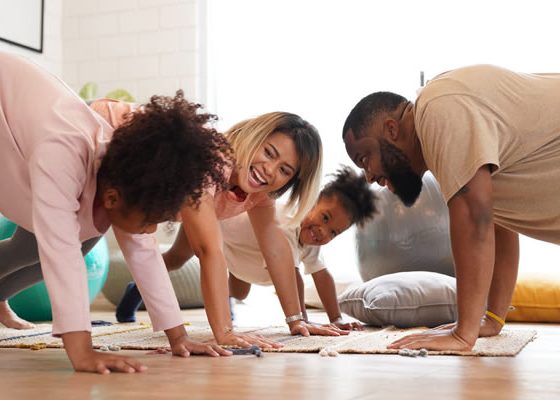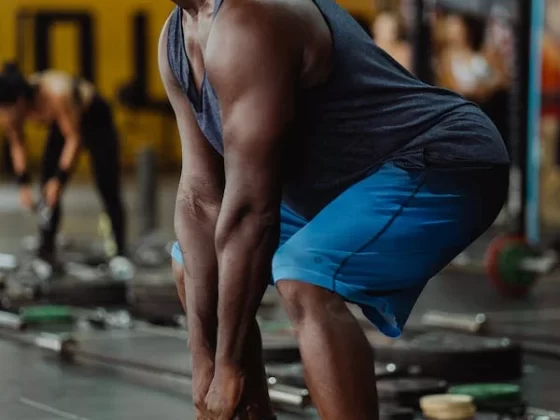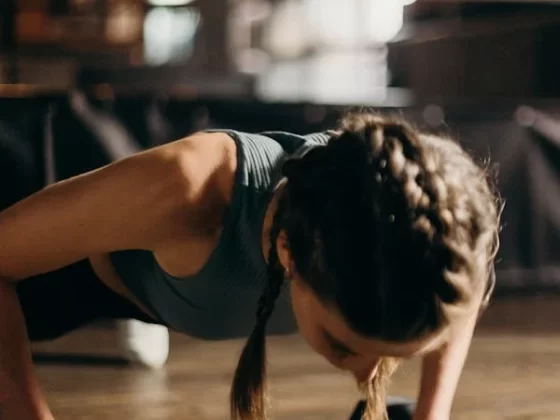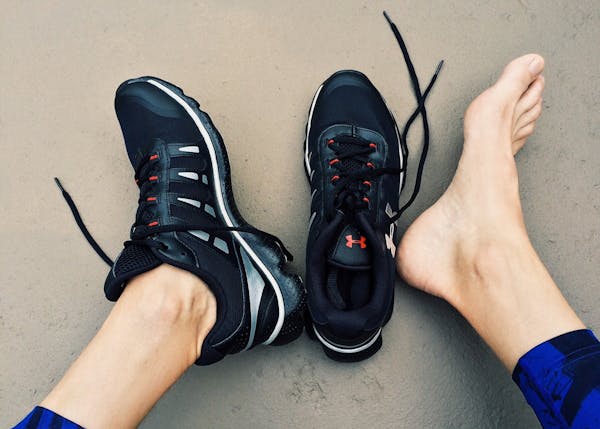
Though replacing running shoes twice a year is the general consensus among running enthusiasts of all ages, there is more to consider that may mean more or less frequent replacement. How many miles you run, what kind of running you do, the quality of your shoes, your weight, and your stride can all have an impact on the timing of running shoe replacement. This article will tackle the importance of replacing shoes and the easy-running shoe replacement tips this year.
Why is it essential to wear the right footwear for running or exercising?
Whether running, walking, playing sports, or hitting the gym, having the right athletic footwear is essential. Wearing inappropriate shoes can lead to injuries that could derail your fitness or weight loss goals. Purchasing top-notch footwear can help avoid foot and ankle injuries, leading to a more pleasant and comfortable workout experience. If you’re serious about running and prioritizing your health, investing in shoes designed for running that cater to the specific biomechanics of a runner’s gait is crucial.
Benefits of Choosing the Right Shoe:
Selecting appropriate footwear can significantly reduce the risk of common injuries associated with your exercise routine. Quality shoes help absorb impact from your steps and provide cushioning to protect your feet during intense landings. Additionally, sport-specific footwear can enhance performance, facilitating quick direction changes and agility.
Foot Injuries and Footwear
Wearing improper workout shoes can lead to injuries beyond the obvious ankle strains and fractures, including bunions, corns, and metatarsalgia—a painful condition affecting the ball of the foot—exacerbated by ill-fitting footwear.
Replacing Worn-Out Shoes
Worn-out athletic shoes fail to support your feet adequately during workouts. Michigan State University Extension recommends replacing running shoes every 350 to 500 miles or approximately every 20 to 25 weeks if you run 20 miles weekly. While many may gauge shoe wear by tread condition, Netwellness advises examining the midsole, which shows signs of damage sooner.
When Should I Change My Running Shoes?
When it Wears an Uneven Pattern
One indication that it’s time to replace your running shoes is an uneven wear pattern. While some tread wear is expected, uneven wear, such as more wear on one shoe or increased breakdown in a specific area of both shoes, can lead to potential issues. According to experts, uneven wear patterns can alter your running stride and create instability, accentuating asymmetries in your gait.
This instability may result in discomfort and aches as your body tries to compensate for the uneven pressure, leading to less efficient movement. Prolonged use of shoes with uneven wear patterns could even impact joint stability, emphasizing the importance of promptly replacing worn-out running shoes.
When it’s Owned for a Long Time
If you’re not logging extensive distances and instead focusing on activities like hill repeats or track work, Jason Machowsky, C.S.C.S., a clinical exercise physiologist, suggests using time as a gauge rather than miles covered. This approach becomes particularly relevant if you alternate between multiple pairs of shoes during your training regimen.
When using time as a reference point, running shoes typically have a lifespan of three to six months, according to Machowsky. However, this duration could vary depending on factors such as the frequency of your runs. Marathon or ultramarathon runners, for instance, may cover upwards of 50 miles per week, necessitating more frequent shoe replacements compared to individuals who engage in occasional sprint workouts.
When it has Lost its Bounce
When a previously effortless run suddenly feels like a struggle, various factors such as sleep deprivation, poor nutrition, or overtraining syndrome may be to blame. However, according to Mack, worn-out shoes could also contribute to this sensation. As the inner foam of the shoes deteriorates over time, they lose their ability to provide the necessary lift-off quality for cushioning and continuous impact during runs.
To determine if your shoes have lost their bounce, try pressing a finger into the midsole inside the shoe. If it feels spongy, the cushioning is still adequate. However, if it feels flat or compressed, it’s a sign that your shoes need replacing.
When it Increased Soreness
One key indicator for knowing when it’s time to change your running shoes is not necessarily the shoes but their impact on your body.
If you’re experiencing Soreness in joints that weren’t previously part of your post-run recovery routine, it’s a clear signal that your shoes may need replacing, according to Machowsky. This Soreness can manifest in various joints, including the ankles, knees, hips, lower back, and even the neck, as worn-out shoes may alter your posture and gait during running.
When Blisters Are Forming on Your Feet
According to Machowsky, blisters are typically the clearest indication that it’s time to replace your running shoes.
While blisters are commonly linked to new shoes, they can also develop when worn-out shoes no longer provide adequate support and cushioning, causing changes in foot position and movement during runs. With diminished support, feet are prone to shifting within the shoe, leading to friction between the skin and the fabric and resulting in painful blisters.
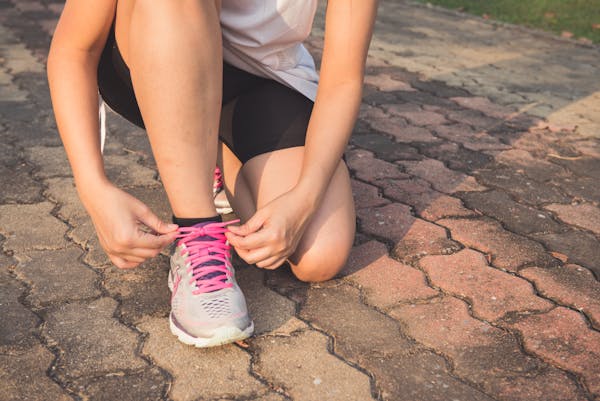
Why It’s Crucial to Replace Old Shoes?
Even if you’re not feeling any joint pain or wobbliness, sticking to worn-out shoes while running can increase your chances of overuse injuries, Machowsky explains. Running shoes are specifically engineered to support and absorb the repetitive impact forces generated during running. When this support diminishes, more impact is transmitted through the body with each stride.
“These increased forces can affect various areas of the body, including the feet, ankles, legs, and lower back,” he emphasizes. “This may result from amplified forces or alterations in how the body moves within the shoe.”
For instance, decreased cushioning can lead to excessive foot collapse or pronation, placing additional strain on the feet, ankles, and shins. Moreover, worn-out tread on the shoe soles can elevate the risk of slips and falls, particularly on wet surfaces like pavement, trails, or icy sidewalks.
4 Key Running Shoe Replacement Tips:
Examine How You Feel Post-Run:
Pay attention to how you feel after a run, as this may reveal the need for new running shoes.
- Does anything hurt (in particular: feet, knees, shins, or lower back)?
- Do your feet have new blisters after your run (although sometimes socks are the culprit here, but shoes may be to blame)?
- Are any of your toenails starting to bruise or feel tender?
Replace Shoes That Aren’t Supportive
Even new shoes might need to be replaced if they don’t offer the support your body needs for your runs. New runners may have to cycle through a few different pairs of running shoes until they find the pair that feels right and provides proper support. It’s a good idea to get fitted for proper running shoes based on your feet and stride. Specialty running shoe stores offer these fitting services – oftentimes free of charge to customers – but expect to pay a little more for shoes at a specialty store.
Runner’s World suggests waiting a week after a run before getting rid of running shoes to ensure the post-run discomfort is actually from the shoes, as opposed to fatigue.
Focus on Mileage
Mileage is an important factor when it comes to running shoes.
-
Average Replacement Mileage
Running shoes should be replaced every 300-500 miles. Well-constructed shoes will likely last longer than lower-end running shoes. Where the mileage takes place can also have an impact on how long the shoes will last; treadmill running can wear out shoes differently than outdoor running, yet outdoor running typically wears out running shoes faster overall.
-
Consider More Than Mileage
The bottom line with mileage is this: if your shoes feel worn out, it’s a good time for a replacement pair. Some shoes can far exceed the 300 mile mark and still feel great, so making a particular mileage the absolute determination of when new shoes are needed can be an expensive and unnecessary practice.
Runner Factors
Your running mechanics and how you treat your shoes can also have an effect on when you’ll need to get new ones.
-
How You Run Impacts Shoes
Heavier runners may have to replace their running shoes more often, as will runners who have a heavy stride. For example, consistent heel-toe strikes on running shoes without ample heel support will wear out more quickly than shoes designed for heel-toe striking.
-
Shoe Treatment
How the running shoes are treated by the runner also impacts how long the shoes last. Runners should take the time to untie the shoelaces on their running shoes before removing them to avoid unnecessary wear and tear. Washing running shoes in a washing machine – even shoes labeled as machine washable – might shorten the shoes’ longevity, while gentle hand-washing can actually extend the shoes’ life.
While running shoes are generally designed to be durable, they can be worn out quicker when not properly cared for.
Visible Signs of Wear
A few visual cues can help you decide if you are ready for a new pair.
-
Examine the Tread
Flip the running shoes over and look for signs of wear. Does the tread look rubbed off in any spots? The wear will be in different spots depending on your stride and the type of running you do, but worn-out tread is a visible sign of less support in those spots, which can lead to sub-par runs and perhaps even injury.
-
Check Tops and Sides of Shoes
Fraying or rips on the top or sides of the shoe can also be a tangible sign of replacement time. Though running shoes certainly aren’t intended to stay pristine with usage, anything that can compromise the stability of the shoe’s design means it’s time for a new pair.

Additional Tips When Choosing Running Shoes
According to the American Orthopaedic Foot & Ankle Society, selecting the right shoe depends on your primary sport activity. If you engage in a particular exercise at least three times a week, opt for a shoe designed for that specific activity.
Now, let’s focus on the most crucial aspect of running shoes: fit. Nothing is more uncomfortable than running in ill-fitting footwear, whether it’s too small, too large, too narrow, or causes blisters due to rubbing heels. Take the time to try on both shoes and if feasible, test them out with a short run in the store or on a treadmill.
Here are additional tips for finding the perfect fit:
- Try on shoes in the afternoon, evening, or after your workout when your feet are largest, as the McKinley Health Centre recommends.
- Check that the heel isn’t slipping. While the shoe shouldn’t be too small, excessive heel slippage may indicate a need for different lacing or a different shoe altogether.
- Wear the same sports socks you’ll use for running, and leave about half a centimeter of space between your big toe and the end of the shoe. Remember, feet tend to swell during exercise, so a shoe that feels just right in the store may feel too snug during a run.
- Ensure the laces are tight enough to prevent the shoe from moving around but not so tight that they restrict circulation.
- Consider the shoe’s breathability based on the weather conditions you’ll be running in. Open mesh designs are ideal for cooling your feet in hot climates but may not be suitable for cold winter runs.
- Bend the shoe to check its flexibility; it shouldn’t be overly flexible, which could indicate insufficient support.
Conclusion:
Though most people regard running as a fairly inexpensive past-time or sport, seasoned runners know the cost of quality shoes can add up quickly. It’s a justified expense, however, as the right running shoes can increase both speed and mileage and make running more comfortable overall. Replacement running shoes are a necessary expense for runners; when your body tells you it’s time for new shoes, take heed.
